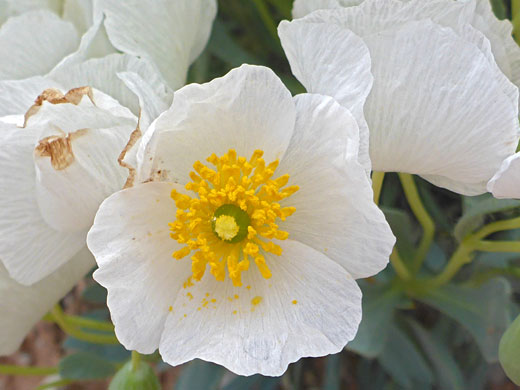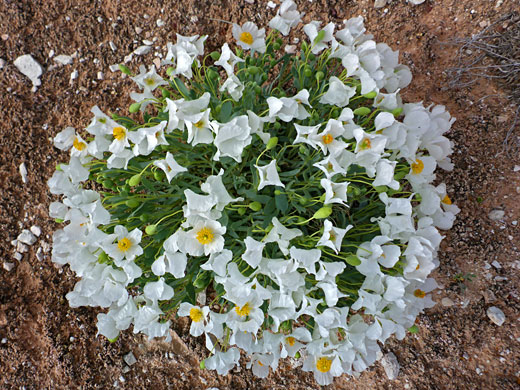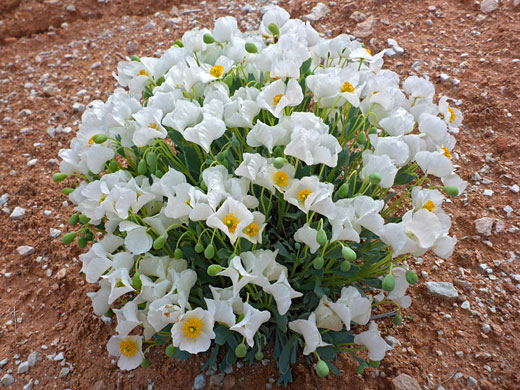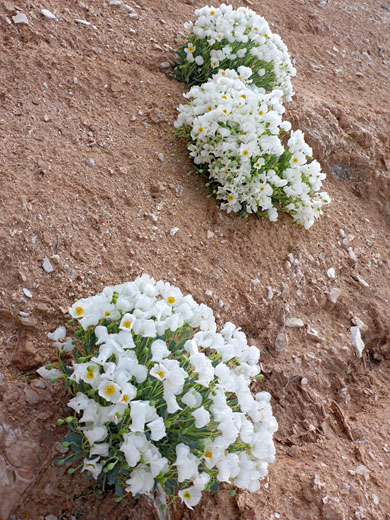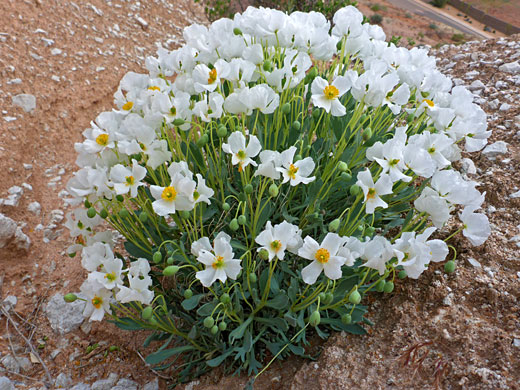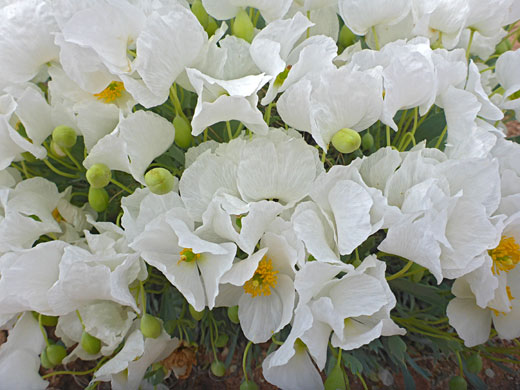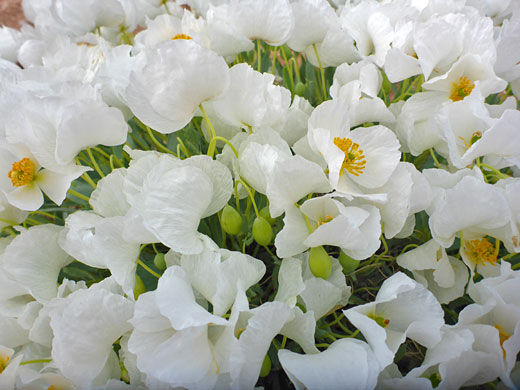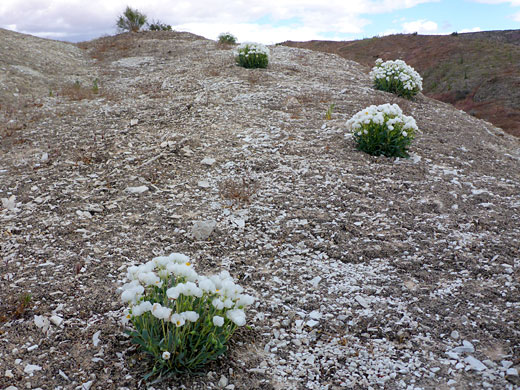Common name:
Dwarf bearpoppy
Family:
Scientific name:
Arctomecon humilis
Main flower color:
Range:
Far southwest Utah and northwest Arizona
Height:
Up to 10 inches
Habitat:
Arid, barren locations on sloping ground with gypsum-rich soils (Moenkopi Formation), associated with creosote bushes; from 2,300 to 3,400 feet
Leaves:
Up to 3 inches long, gray-green, divided at the tip into 3 or 5 lobes
Season:
April to May
Arctomecon humilis is the rarest and least widespread of the three members of the genus, restricted to a 20 mile band in far southwest Utah, centered on St George, and (in theory at least) extending just across the border into Arizona; it can however, be locally abundant, with hundreds of plants growing close together, yet is classed as endangered, threatened by housing developments and off-road vehicle use.
Plants form hemispherical clumps, typically 12 inches across, sometimes with several hundred flowers, appearing from a distance to be all-white. They grow on barren slopes, ridges and flats, on gypsum-rich soils of the Moenkopi Formation.
Leaves are spatulate in outline; widening abruptly at around 70% of their length, and divided into (usually) three rounded lobes. They have a dense covering of very short hairs, and a sparse coating of soft, longer hairs. Flowers are in clusters of two to seven. The four rounded white petals and two or three light green sepals are hairless. Stamens are yellow, and numerous, arranged around the central, lobed, green pistil. Buds are drooping, the flowers erect.
Plants form hemispherical clumps, typically 12 inches across, sometimes with several hundred flowers, appearing from a distance to be all-white. They grow on barren slopes, ridges and flats, on gypsum-rich soils of the Moenkopi Formation.
Leaves are spatulate in outline; widening abruptly at around 70% of their length, and divided into (usually) three rounded lobes. They have a dense covering of very short hairs, and a sparse coating of soft, longer hairs. Flowers are in clusters of two to seven. The four rounded white petals and two or three light green sepals are hairless. Stamens are yellow, and numerous, arranged around the central, lobed, green pistil. Buds are drooping, the flowers erect.
All Contents © Copyright The American Southwest | Comments and Questions | Contribute | Site Map
